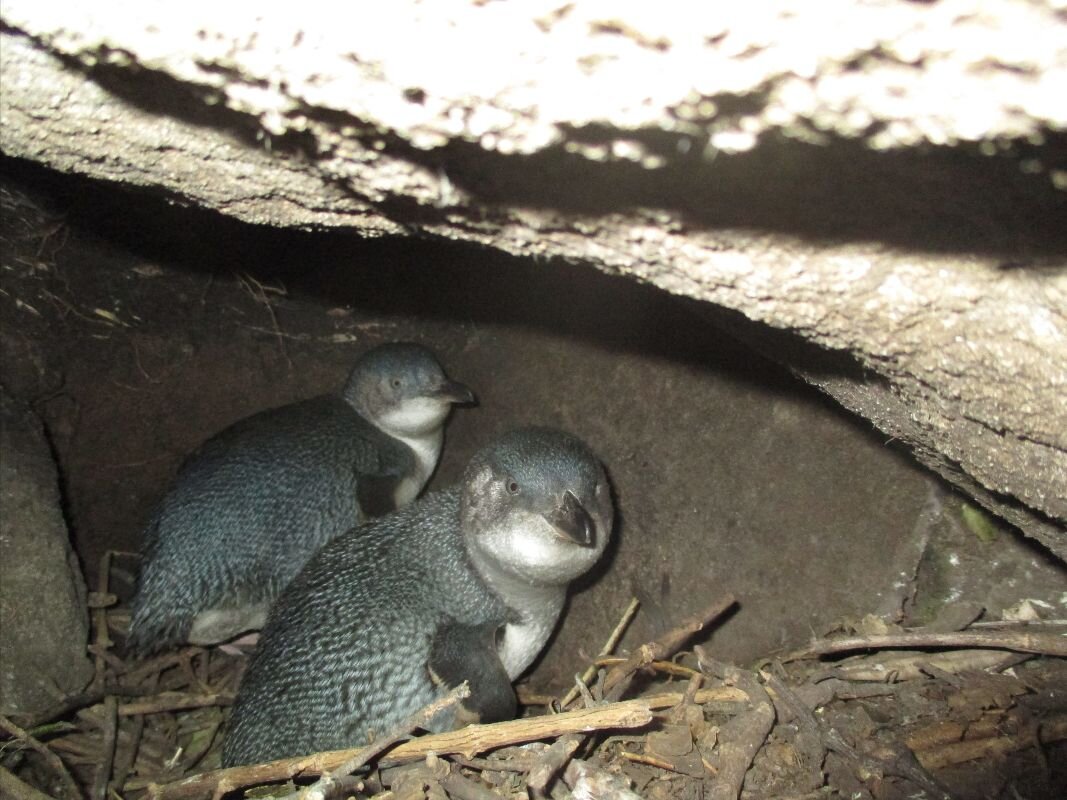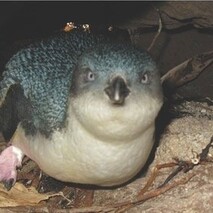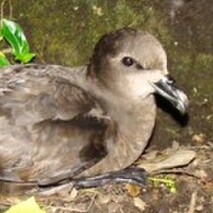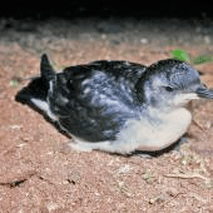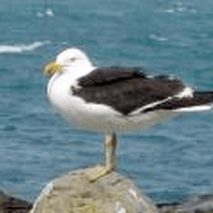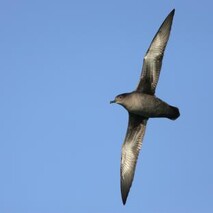Seabirds are birds that spend most of their time at sea, only returning to land to breed. Mauao has the Grey-faced Petrel, and Little Penguin in this group. Both groups are well-studied, with some Trustees spending nearly 30 years researching the petrels, which also occur on Motuotau. Common Diving Petrels are on pest-free Motuotau in small numbers, and they also attempt tonest on Moturiki, with no success.
Little Blue Penguin
The local Little Blue penguin population was unknown until the Rena Oil Spill crisis. 350 oiled penguins – mostly from Mauao, Moturiki and Motuotau, were caught, cleaned and released back into their original environment after the rocks were cleared of oil. It was during this time that we “discovered” the local population was much bigger than we had imagined. An estimated 800 nest on Mauao, 200 on Moturiki and 400 on Motuotau.
Find out more about our Penguin Monitoring Project
Grey-faced Petrel
About 500 birds use the colony at Mauao, spread around the base of the mountain under the skirts of the pohutukawa forest, with some burrows higher up to a maximum of c.75m above sea level. It is one of New Zealand’s most common seabirds, with vast colonies on Moutuhora (Whale Island) off Whakatane, and a large number on Motuotau (Rabbit Island) just offshore from Moturiki (Leisure Island).
Diving Petrel
Diving Petrels nest on Motuotau in the hundreds. These birds were particularly vulnerable to the Rena oil as they fly close to the surface of the water and sometimes fly through waves. Around 2002 pest-free Motuotau was invaded by a stoat which killed nearly 100 birds in a short space of time. The stoat was trapped by DoC. Some birds have been banded with metal bands during the 1990s were still alive in 2011.
They are trying to re-establish themselves on Mauao and Moturiki but struggle against cats and stoats that easily catch and kill them.
Common Diving Petrel – Birds on Line
Australasian Gannet
The Gannet dives for fish from a great height. It is the only bird in the world with an s-shaped bone in the wing to allow for the winds to fold back flat when diving. If you are lucky you can see Gannets diving off Mauao in Pilot Bay. Their nearest breeding colony is White Island, off Whakatane.
Australasian Gannet – NZ Birds on Line
White-fronted Tern
The small terns are related to gulls, and the White-fronted Tern nests on wharf pilings and offshore rock stacks. You can observe White-fronted Terns diving for fish from all site
White Fronted Terns – NZ Birds on Line
White fronted tern – Adults. Photo taken at Ruawai, September 2012 by Thomas Musson – contact tomandelaine@xtra.co.nz
Caspian Tern
This is the largest tern, with colonies historically on Matakana Island (not recently studied). New Zealand is one of the few places with reasonable populations of this tern, as it is reportedly uncommon in the other locations in the world it is found.
Caspian Tern – NZ Birds on Line
Caspian tern. Adult in breeding plumage. Wanganui, August 2007. Image © Ormond Torr
Black-backed Gull
The most common gull species is also the noisiest, with lots of nests now appearing below the track on Mauao. This species has benefited from human habitation, and exists in artificially high numbers in the Bay of Plenty, as well as the rest of the country.
Black-Backed Gull – NZ Birds on Line
Southern black-backed gull. Adult. Kaikoura coast, February 2009. Photo by James Mortimer
Red-billed Gull
This common small gull that many see around the coasts is in fact declining in numbers, but still is a familiar sight at picnic areas and beaches. A serial opportunist, this gull has also benefited from human habitation and urbanisation.
Red-Billed Gull – NZ Birds on Line
Red-billed gull. Pair. Northland, January 2008. Photo by Peter Reese
Fluttering Shearwater
This pelagic (open ocean) species nests on offshore islands, but is often seen just off the main coast of the Bay of Plenty. A small black and white bird, their flight is quite distinctive, with long periods of soaring just above the waves.
Fluttering shearwater – NZ Birds on LineFluttering shearwater. In flight showing underwing. Wellington Harbour, June 2008. Photo by Duncan Watson
Sooty Shearwater
More of a transient species, with vast colonies south of Stewart Island, nevertheless it is often seen wheeling offshore. Can be confused with either the Black Petrel, which nests on Great & Little Barrier Islands, or the Flesh-footed Shearwater of Karewa Island, near Matakana Island.
Sooty Shearwater - NZ Birds Online
Sooty shearwater. Ventral view of adult in flight. At sea off Banks Peninsula, April 2009. Image © David Boyle by David Boyle
